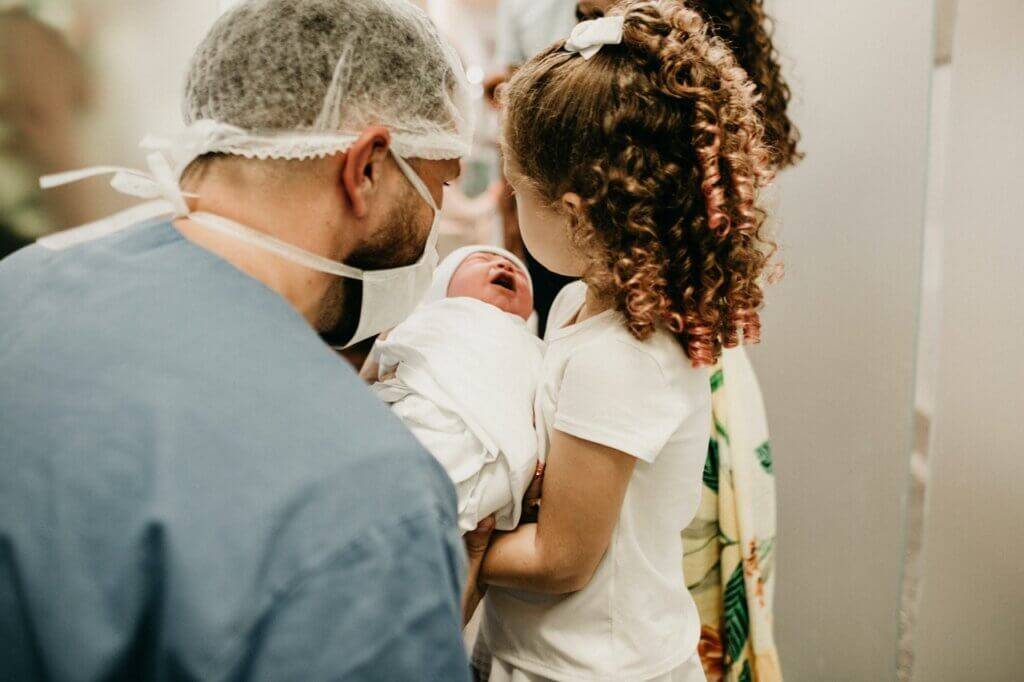Signs of a breech baby, type of breech baby presentation.
Breech babies happen when the baby is positioned in the uterus with its head up and its feet facing toward the delivery canal. This posture makes labor harder for the mother. Usually, toward the end of your pregnancy, the breech babies should be able to turn their heads by themselves in the vertex position for an easier birthing process.
Ideal Birth Position – occiput anterior or longitudinal lie position.
This ideal position helps the mother deliver her baby safely, fast, and less pain. Significantly, the delivery will be less painful if the baby is in the ideal birth position and turns its head down the birth canal. Most babies will settle into this vertex position between the 32nd and 36th weeks of pregnancy.
Other birth positions might cause complications for the mother and the baby during the delivery process. Therefore, additional support and monitoring are necessary at the moment of birth if the baby is in these positions. Questions for the mother might arrive when the baby is not in the ideal birth position, and how to make your baby turn downward during pregnancy?
What is breech babies?
The buttocks and feet of breech babies face the vaginal canal during delivery.
Premature birth has a higher rate of breech presentations than full-term birth.
- 20% to 25% of Babies are in breech position before the 28th week of pregnancy.
- 5% to 7% of babies still remain in breech position by the 34th week of pregnancy.
- 3% to 4% of babies will not turn their heads towards the cervix area and still stay in their breech position.
Type of breech babies
- Complete breech: both of the baby’s knees are bent, and his feet and bottom are closest to the birth canal
- Incomplete breech: one of the baby’s knees is bent, and his foot and bottom are closest to the birth canal
- Frank breech: the baby’s legs are folded flat up against his head and his bottom is closest to the birth canal.
- Footling breech: one leg of the baby is lowered over the mother’s cervix.
How to Tell If Your Baby Is Breech
During your pregnancy, your doctor or OB-GYN will check up on you and your baby to ensure a safe delivery. However, as a mother, you are always feeling the movement of your baby in your womb. There are many ways to determine which way your baby is facing and determine if you have breech babies.
Kicks: To figure out their head position, you can tell where your baby is kicking you and where they are in general. For example, if you feel kicks in your lower pelvis, the baby has not yet turned its head down. However, the baby is facing down your birth canal will kick their legs toward your ribs.
Palpation: During your prenatal checkups, your doctor will examine your baby’s position by palpating or touching your tummy to locate the baby’s head, back, and bottom.
Heartbeat: Listening to the baby’s heartbeat is another approach to determine their location. The doctor can tell you where the baby’s head is after using a stethoscope to locate the baby’s heartbeat.
Ultrasound: Ultrasound images are the most precise technique to detect the exact location of your baby in your uterus. The doctor will be able to tell what sort of breech position your baby is in after the scan.
Pelvic exam: Upon your pelvic examination, a doctor will check on your reproductive organ to find out abnormal symptoms such as unusual discharge or pelvic pain. Also, they are able to tell if your baby is still in a breech position or not.

The complications of having a breech baby:
Breech births cause problems for the moms and then babies when water breaks early Some of the breech babies have birth-related defects occurring after the delivery including infections, heavy bleeding, oxygen deprivation to the fetus, and stillbirths.
However, this number is relatively small because the rest of 93% of breech babies are healthy and normal.
Examples of breech baby birth defects mentioned above are:
- Autism: When newborns are born in the breech position, the cord compresses and prolapses around their neck, causing brain injury. Lack of oxygen to the newborn is one of the causes of autism and other brain disorders that will damage the baby’s communication and social patterns in the future. When babies are in breech position, there are always chances of cord compression and cord prolapse around their neck causing brain damage. The lack of oxygen to the baby is the reason for autism and more brain disorder that affects the communication and social pattern of the baby in the future.
- Down Syndrome: Down syndrome is a condition that affects newborns who have more than 46 chromosomes. The presence of the 47th chromosome provided additional material to the development of the babies, which triggered their mental disorder. There isn’t enough evidence that breech delivery is the cause of down syndrome. However, People assume breech delivery causes down syndrome because older pregnant women are more likely to experience breech birth with a kid who inherits an extra chromosome.
- Chromosomes: Breech birth can also be caused by the structure or excess amounts of chromosomes. When this happens, mental retardation occurs. Breech newborns are more likely to develop cardiovascular and heart problems.
- Other Birth Defects: The spinal cord problem is linked to certain breech babies. When your babes are in the breech position, you’re more likely to have babies with stunted muscle growth and spinal deformities.
Ideally, breech baby cause complication on the mother because she might have problems occurring during or after labor from using vaginal birth or C-section.
Even when there are no evident birth defects, there may still be certain complications you may have to experience when your baby is in a breech position. For instance:
- Umbilical Cord Prolapse: This situation can cause life-threatening problems for the baby because the umbilical cord enters the birth canal before the baby. This is more likely to occur in the footling breech position.
- Placenta Previa: When a baby is born breech, the placenta can occasionally overlap the birth canal. You may experience breech baby as a result of this, which sometimes can become severe in certain situations. Because the placenta is in the way, the baby cannot adjust its breech position.
- Uterine Abnormalities: Intrauterine adhesions, uterine septum, or fibroids are some of the most common uterine issues associated with your baby being in the breech position. Exactly when these problems occur is hard to tell because most women do not experience any symptoms.
- Difficult Delivery: Because your baby is in a breech position, you will experience servere labor pains. Some babies even sustain injuries, such as the fracture of the arm and shoulder.

The reason why you have breech babies
A breech presentation may arise from:
Placenta praevia:
Multiple gestations:
Uterine abnormalities
Pre-maturity
Primigravidae
Older mothers
Babies that are small for gestational age
How to prepare for breech delivery?
Reading more about breech babies can add more stress before your birth. However, having a good birth plan and preparation before labor can be helpful. Especially, having a C-section may not be a goal of your birth plan.
There are several non-surgical options for breech presentation, such as the knee-chest position therapy and the external manual cephalic version. The knee-chest position, on the other hand, is difficult to adopt and is likely to result in inadequate compliance, whilst the external cephalic position is far more complicated, possibly hazardous, time-consuming, and costly.
How to turn your breech delivery?
Good news! Breech baby can be turned with natural methods from acupuncture and traditional Chinese medicine practice.
Moxibustion is a traditional method of burning moxa sticks (usually made from herbal preparations containing Artemisia vulgaris) near an acupoint to cause a warm and painless sensation. In China, moxibustion on Zhiyin (BL67) point has long been used to correct abnormal fetal position and is widely used to correct breech presentation in obstetrics. Many patients who have come to us have succeeded in turning their babies. Moxibustion and other acupoint stimulation methods such as acupuncture and laser stimulation were found to be effective to treat breech presentation.
